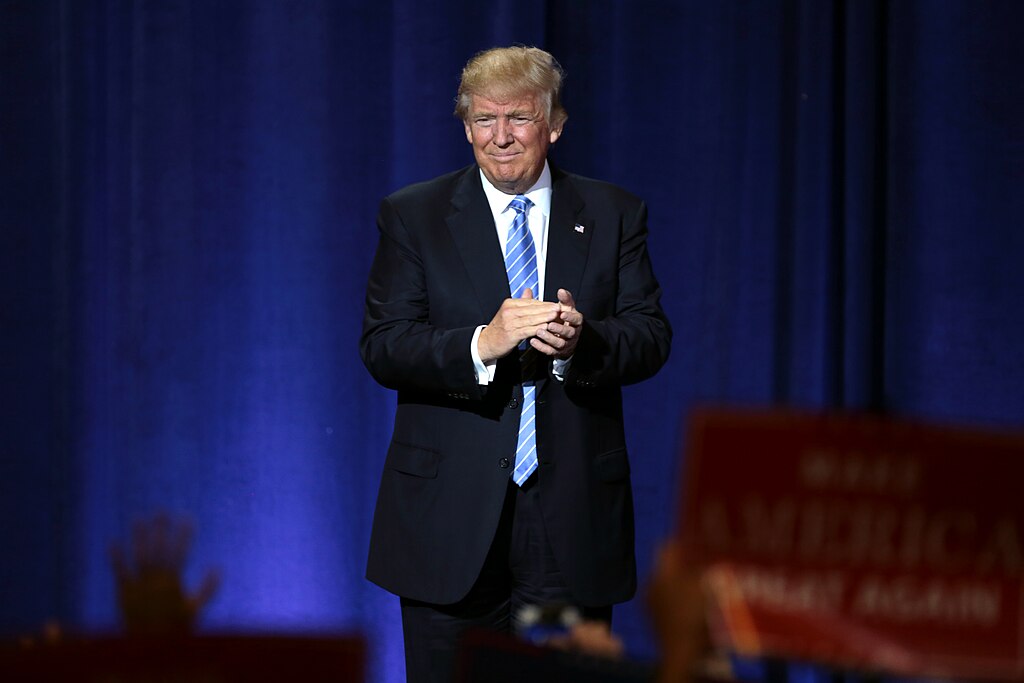As President-elect Donald Trump prepares to re-enter the White House in 2025, one of his key promises centers on enhancing disaster warning systems nationwide. With natural disasters becoming increasingly frequent and severe, Trump has pledged to overhaul existing protocols to ensure faster, more effective alerts, aiming to save lives and reduce property damage.
During his campaign, Trump highlighted the deficiencies exposed by recent disasters, including hurricanes, wildfires, and tornadoes, which caused billions of dollars in damage. Critics and experts agree that while improvements are necessary, Trump’s ambitious plans may face significant challenges.
Planned Upgrades to Disaster Warning Systems
Trump’s proposed enhancements focus on leveraging advanced technology and streamlining communication between federal, state, and local agencies. According to his transition team, the strategy includes:
- Satellite Modernization: Updating the fleet of weather-monitoring satellites to provide real-time data and more accurate forecasts.
- AI Integration: Using artificial intelligence to predict disaster patterns and deliver precise warnings tailored to specific communities.
- Cellular Alerts: Expanding the Wireless Emergency Alert system to include multilingual options and customizable notifications for individual users.
- Community Outreach: Implementing educational programs to teach the public how to respond to various disasters effectively.
The Federal Emergency Management Agency (FEMA) will play a central role in these initiatives, with increased funding expected in Trump’s first budget proposal.
“Our goal is to create a disaster response system that not only warns but empowers citizens to act swiftly,” a Trump spokesperson stated.
Challenges to Implementation and Public Reaction
While Trump’s plan has garnered praise from supporters, critics are skeptical about its feasibility. Analysts cite potential obstacles, such as budget constraints, technological hurdles, and coordination among various government entities.
Public sentiment remains divided, as reflected in reactions across social media platforms:
- @DisasterPrepGuru: “Finally, a leader addressing the disaster warning crisis! Let’s see if Trump can deliver on this promise.”
- @SkepticSurvivor: “Trump talks a big game, but where’s the funding coming from? More empty promises?”
- @TechForGood: “Using AI for disaster warnings could be a game-changer if implemented right. Fingers crossed!”
- @ClimateActionNow: “How about addressing climate change first? No warning system will save us if disasters keep escalating.”
- @EmergencyResponder2024: “As someone on the ground, I can say we need this overhaul ASAP. Hope it’s not all talk.”
- @CivicObserver: “Multilingual alerts? That’s a great idea. About time we catered to everyone in emergency situations.”
Critics also point out Trump’s mixed record on environmental policies, which some argue contributes to worsening disaster scenarios.
Balancing Ambition and Realism
Despite skepticism, Trump’s focus on disaster preparedness could address longstanding concerns about the nation’s ability to respond to emergencies. His administration will need to strike a balance between ambitious goals and practical implementation, ensuring public confidence in the revamped systems.



 U.S. Soldiers Killed in ISIS Attack in Palmyra, Syria During Counterterrorism Mission
U.S. Soldiers Killed in ISIS Attack in Palmyra, Syria During Counterterrorism Mission  U.S. Intelligence Briefly Curtailed Information Sharing With Israel Amid Gaza War Concerns
U.S. Intelligence Briefly Curtailed Information Sharing With Israel Amid Gaza War Concerns  Israeli Airstrike in Gaza Targets Senior Hamas Commander Amid Ceasefire Tensions
Israeli Airstrike in Gaza Targets Senior Hamas Commander Amid Ceasefire Tensions  Korea Zinc Plans $6.78 Billion U.S. Smelter Investment With Government Partnership
Korea Zinc Plans $6.78 Billion U.S. Smelter Investment With Government Partnership  California, 18 States Sue to Block Trump’s $100,000 H-1B Visa Fee
California, 18 States Sue to Block Trump’s $100,000 H-1B Visa Fee  Judge Orders Return of Seized Evidence in Comey-Related Case, DOJ May Seek New Warrant
Judge Orders Return of Seized Evidence in Comey-Related Case, DOJ May Seek New Warrant  Belarus Frees Opposition Leaders Maria Kalesnikava and Viktar Babaryka in U.S.-Brokered Deal
Belarus Frees Opposition Leaders Maria Kalesnikava and Viktar Babaryka in U.S.-Brokered Deal  Special Prosecutor Alleges Yoon Suk Yeol Sought North Korea Provocation to Justify Martial Law
Special Prosecutor Alleges Yoon Suk Yeol Sought North Korea Provocation to Justify Martial Law  Belarus Frees 123 Political Prisoners in U.S.-Brokered Deal Over Sanctions
Belarus Frees 123 Political Prisoners in U.S.-Brokered Deal Over Sanctions  Thailand Vows Continued Military Action Amid Cambodia Border Clash Despite Trump Ceasefire Claim
Thailand Vows Continued Military Action Amid Cambodia Border Clash Despite Trump Ceasefire Claim  International Outcry Grows Over Re-Arrest of Nobel Laureate Narges Mohammadi in Iran
International Outcry Grows Over Re-Arrest of Nobel Laureate Narges Mohammadi in Iran  Ukraine’s NATO Concession Unlikely to Shift Peace Talks, Experts Say
Ukraine’s NATO Concession Unlikely to Shift Peace Talks, Experts Say  New Epstein Photos Surface Showing Trump as Lawmakers Near Document Release Deadline
New Epstein Photos Surface Showing Trump as Lawmakers Near Document Release Deadline  Syria Arrests Five Suspects After Deadly Attack on U.S. and Syrian Troops in Palmyra
Syria Arrests Five Suspects After Deadly Attack on U.S. and Syrian Troops in Palmyra  Russian Drone Attack Hits Turkish Cargo Ship Carrying Sunflower Oil to Egypt, Ukraine Says
Russian Drone Attack Hits Turkish Cargo Ship Carrying Sunflower Oil to Egypt, Ukraine Says  Bolivia Orders Pre-Trial Detention of Former President Luis Arce Over Embezzlement Probe
Bolivia Orders Pre-Trial Detention of Former President Luis Arce Over Embezzlement Probe 
































